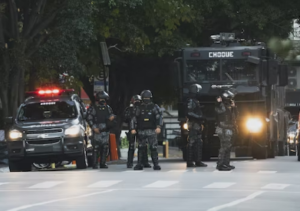High-speed pursuits are among the highest liability areas in law enforcement. Interestingly, many officers find them to be one of the most thrilling aspects of the job. It may seem simple to terminate a pursuit, but often communication afterward is a challenge. Beyond simply saying, “I told you so…”
- Can your supervisors clearly articulate the reasons for ordering the termination of a pursuit?
- Are their explanations reasonable and do they change behavior to prevent bad outcomes?
Effective communication can prevent misunderstandings, improve officer understanding, and enhance overall safety. While it may seem obvious, here are several ways to effectively explain why pursuits could be terminated:
Severity of the Original Crime
- Violent Crimes: If the suspect is wanted for a violent crime (e.g., armed robbery, homicide), the need to apprehend may be higher, but still balanced against public safety.
- Non-Violent Crimes: For non-violent crimes or lesser offenses, the justification for continuing a high-risk pursuit is generally lower.
Risk to Public Safety
- Dangerous Driving Behavior: If the suspect’s driving becomes increasingly reckless (e.g., running red lights, driving on the wrong side of the road), the risk to innocent bystanders escalates.
- Traffic Conditions: Heavy traffic conditions increase the likelihood of collisions and injuries to bystanders.
- Pedestrian Presence: High pedestrian areas, such as school zones or busy urban streets, significantly raise the risk of harm.
Environmental Conditions
- Weather: Adverse weather conditions (e.g., rain, snow, fog) can make the pursuit more dangerous. Road Conditions: Poor road conditions, such as icy or wet roads, increase the risk of accidents during a high-speed pursuit.
- Duration and Distance of the Pursuit Extended Pursuits: The longer a pursuit continues, the more likely it is to result in fatigue and increased danger for both officers and the suspect.
- Crossing Jurisdictions: Pursuits that cross into multiple jurisdictions may complicate coordination and increase risks.
Availability of Alternative Tactics
- Air Support: If air support is available, it can track the suspect without the need for a high-speed ground pursuit.
- Tire Deflation Devices: The possibility of deploying tire deflation devices or other roadblocks can influence the decision to terminate the active pursuit in favor of these tactics.
- Surveillance: Using GPS tracking or other surveillance methods can allow for a less risky apprehension later.
- Known Offender: If you know the suspect’s identity, they can be arrested at a later time.
Officer and Suspect Safety
- Officer Fatigue: The physical and mental fatigue of pursuing officers can compromise their ability to continue the pursuit safely.
- Suspect’s Condition: If the suspect’s actions indicate they are desperate or impaired (e.g., under the influence of drugs or alcohol), the risk of a dangerous confrontation increases.
Policy and Supervisor Input
- Agency Policy: Adherence to departmental pursuit policies, which often outline specific criteria for termination.
- Supervisor’s Decision: Input and directives from a supervising officer can be crucial, as they can provide an objective assessment of the situation.
Public and Media Perception
- Community Safety: The potential backlash from endangering the public can influence the decision, especially if there is a safer alternative.
- Media Coverage: High-profile pursuits often attract media attention, which can impact public perception and policy considerations.


